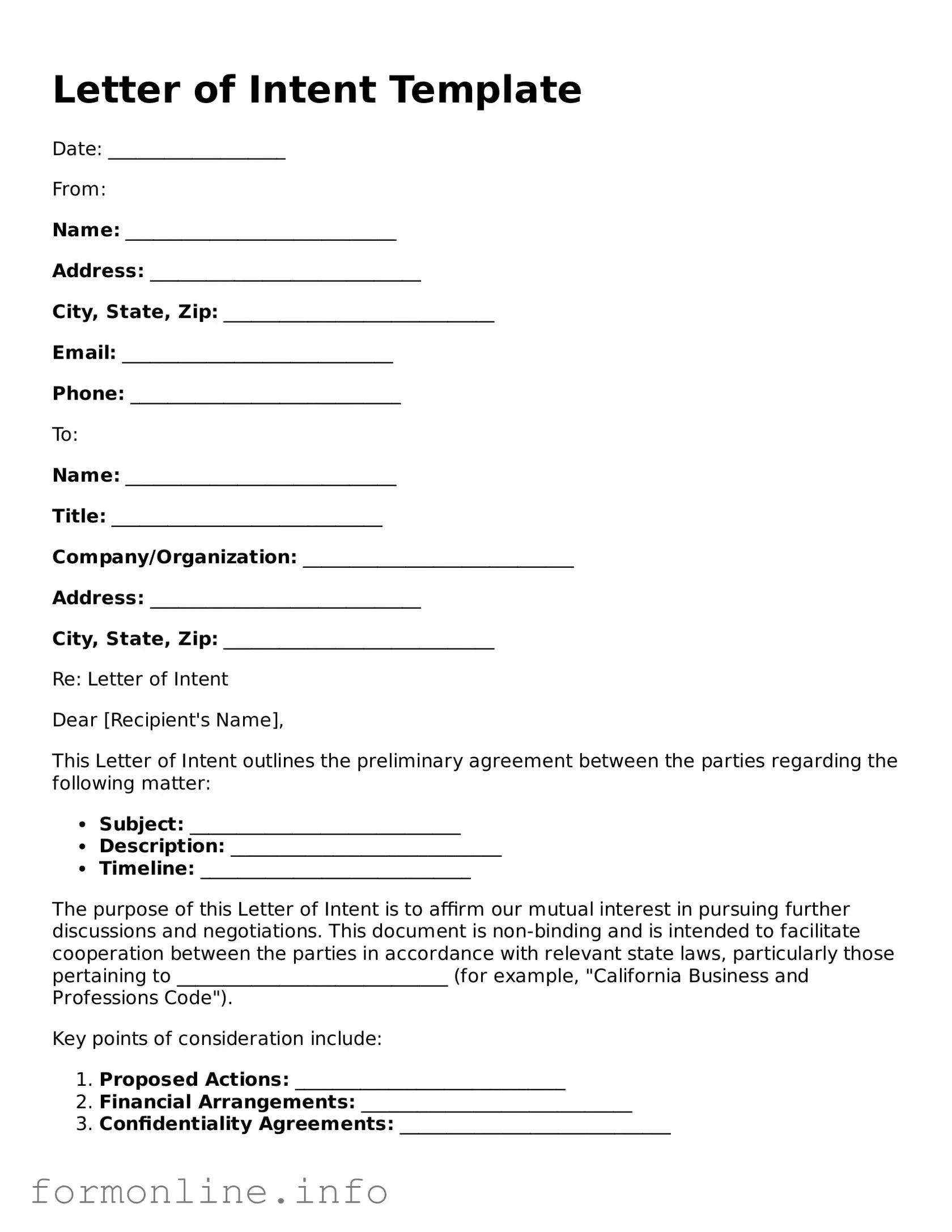Letter of Intent Template
Date: ___________________
From:
Name: _____________________________
Address: _____________________________
City, State, Zip: _____________________________
Email: _____________________________
Phone: _____________________________
To:
Name: _____________________________
Title: _____________________________
Company/Organization: _____________________________
Address: _____________________________
City, State, Zip: _____________________________
Re: Letter of Intent
Dear [Recipient's Name],
This Letter of Intent outlines the preliminary agreement between the parties regarding the following matter:
- Subject: _____________________________
- Description: _____________________________
- Timeline: _____________________________
The purpose of this Letter of Intent is to affirm our mutual interest in pursuing further discussions and negotiations. This document is non-binding and is intended to facilitate cooperation between the parties in accordance with relevant state laws, particularly those pertaining to _____________________________ (for example, "California Business and Professions Code").
Key points of consideration include:
- Proposed Actions: _____________________________
- Financial Arrangements: _____________________________
- Confidentiality Agreements: _____________________________
We envision this collaboration leading to a formal agreement that secures the interests of both parties. Please acknowledge your intent to move forward by signing below.
Best regards,
Name: _____________________________
Title: _____________________________
Company/Organization: _____________________________
Agreed and accepted:
Name: _____________________________
Title: _____________________________
Company/Organization: _____________________________
Date: ___________________
